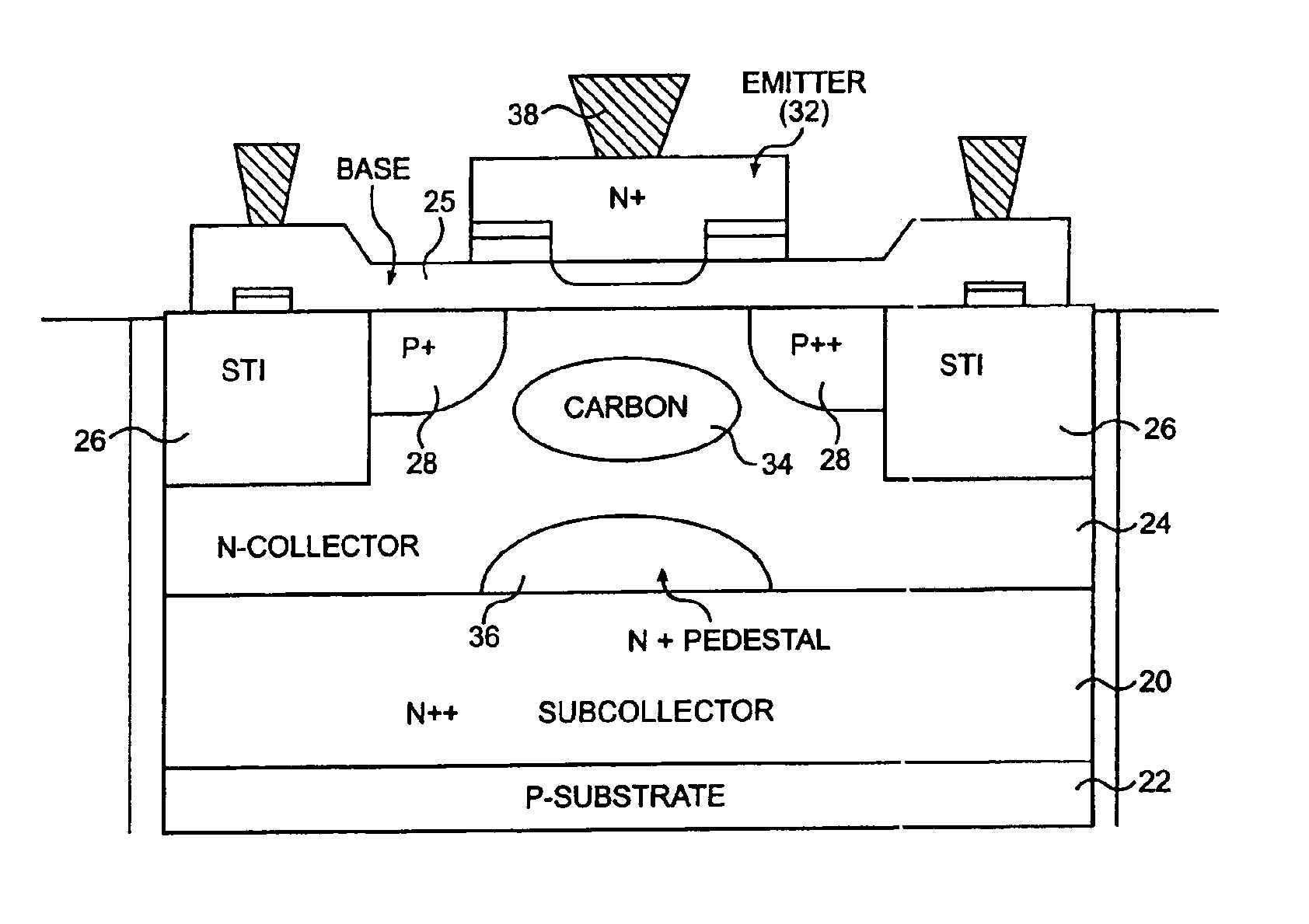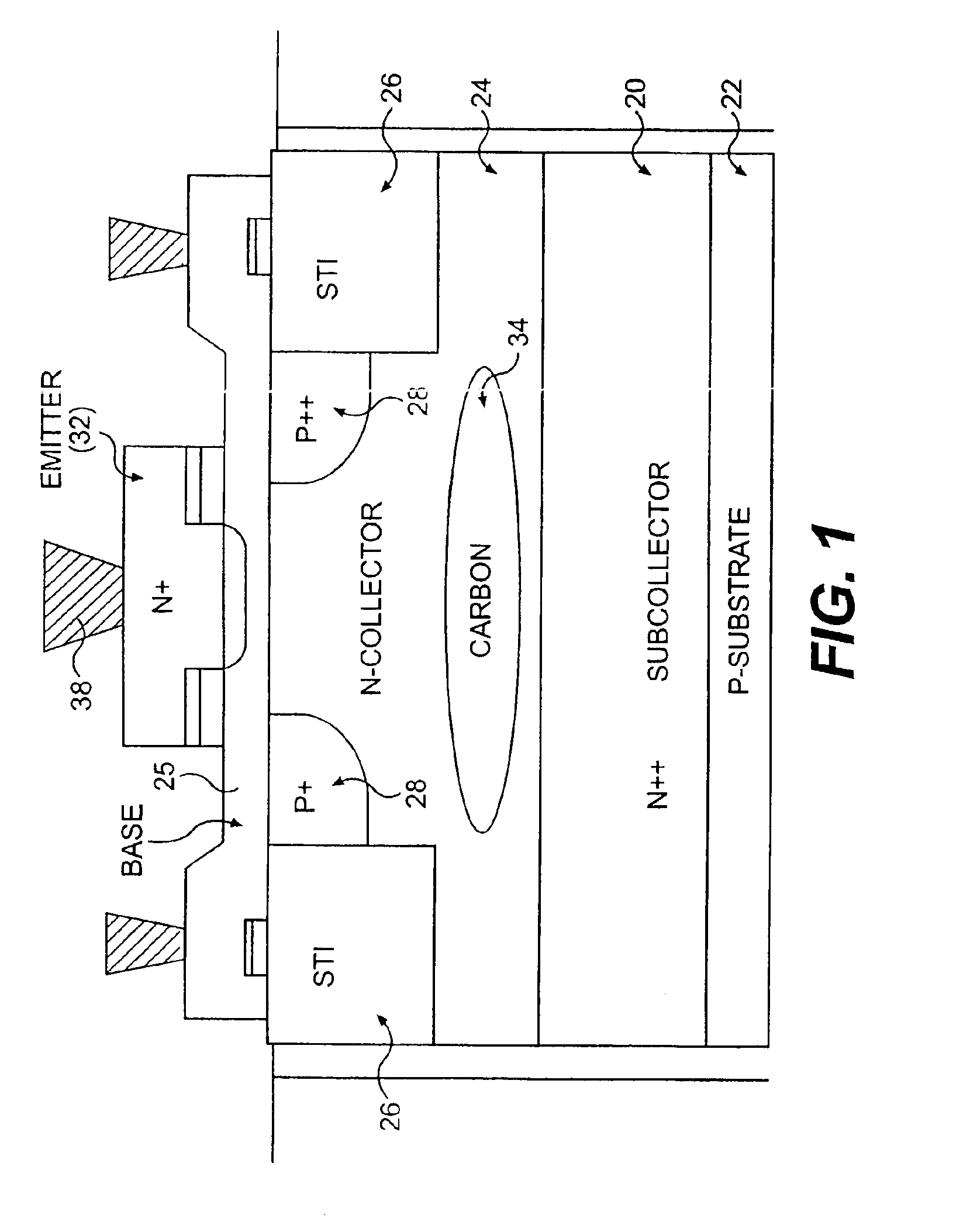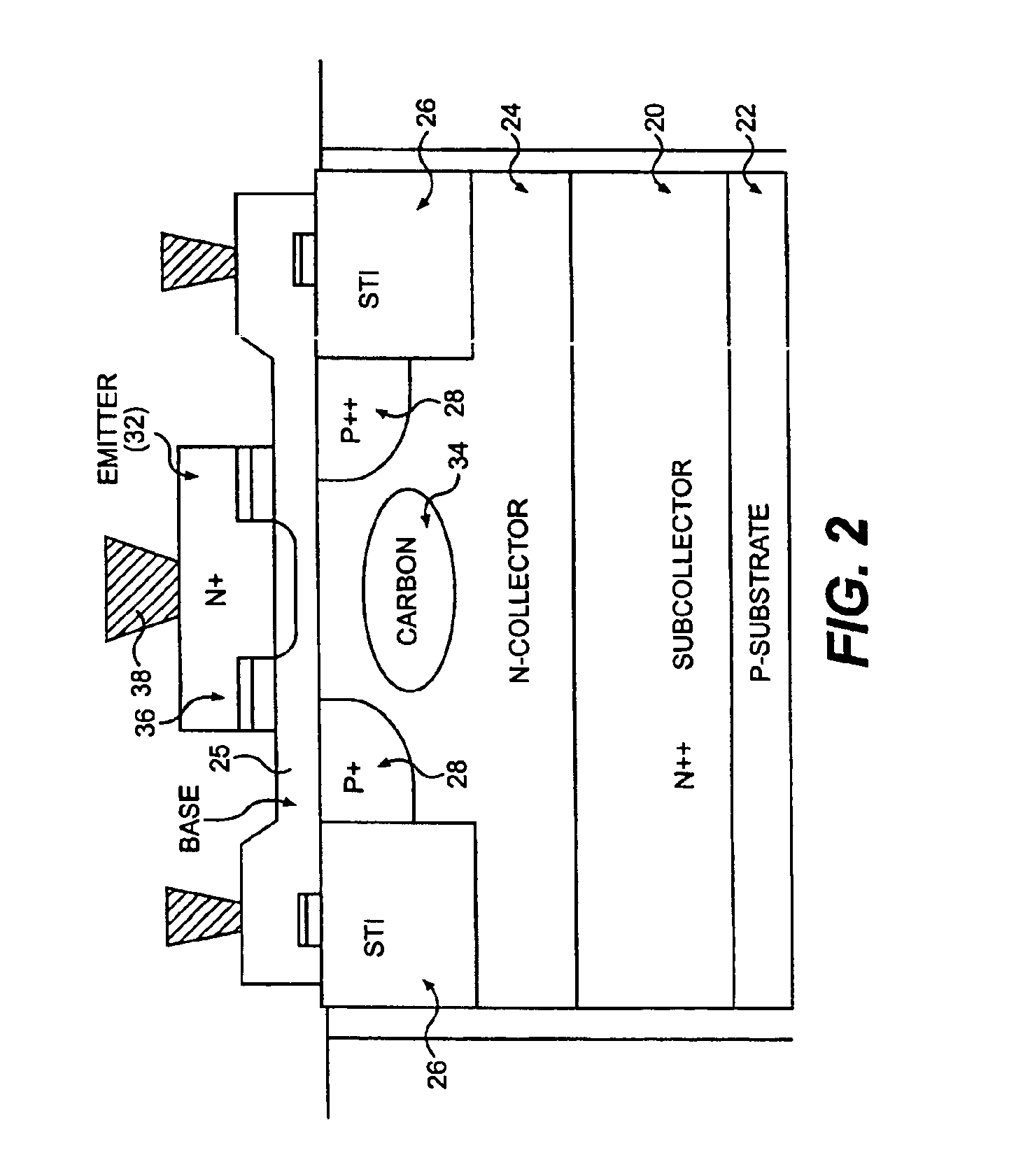Carbon-modulated breakdown voltage SiGe transistor for low voltage trigger ESD applications
- Summary
- Abstract
- Description
- Claims
- Application Information
AI Technical Summary
Benefits of technology
Problems solved by technology
Method used
Image
Examples
Embodiment Construction
FIG. 1 shows the SiGe HBT structure for a transistor to be used in a trigger-clamp ESD protection circuit. The SiGe HBT devices are designed on a p− substrate (22). A n++ subcollector (20) is then formed over the p− substrate (22). An n− collector (24) is then formed over the n++ subcollector. The n− dopants in the n− collector (24) can be arsenic, phosphorus, and antimony, or any other type n− dopant. Shallow trench isolation areas (26) are then formed in the n− collector. The base (25) is formed by providing a ultra-high vacuum chemical vapor deposition (UHV / CVD) SiGe deposited film on the silicon surface. The extrinsic base is then formed by forming p+ (28) areas adjacent to the n− collector. An emitter (32) is then formed to overlap the p+ (28) extrinsic base areas and the n− collector (24).
A carbon implant (34) is then placed in various regions of the transistor. This carbon implant (34) promotes the migration of the n-type dopants in the collector away from the region of the p...
PUM
 Login to View More
Login to View More Abstract
Description
Claims
Application Information
 Login to View More
Login to View More - R&D
- Intellectual Property
- Life Sciences
- Materials
- Tech Scout
- Unparalleled Data Quality
- Higher Quality Content
- 60% Fewer Hallucinations
Browse by: Latest US Patents, China's latest patents, Technical Efficacy Thesaurus, Application Domain, Technology Topic, Popular Technical Reports.
© 2025 PatSnap. All rights reserved.Legal|Privacy policy|Modern Slavery Act Transparency Statement|Sitemap|About US| Contact US: help@patsnap.com



